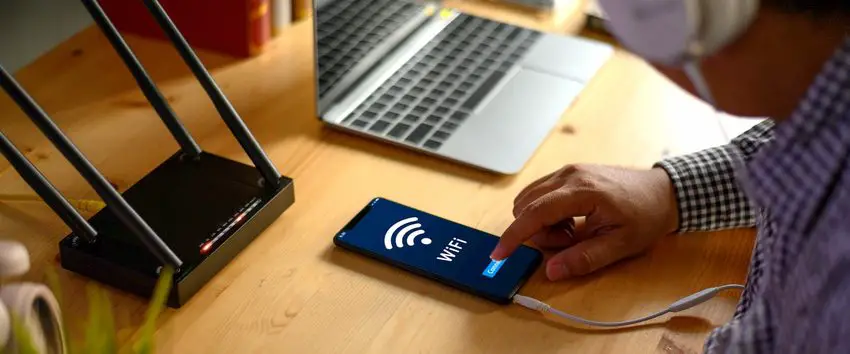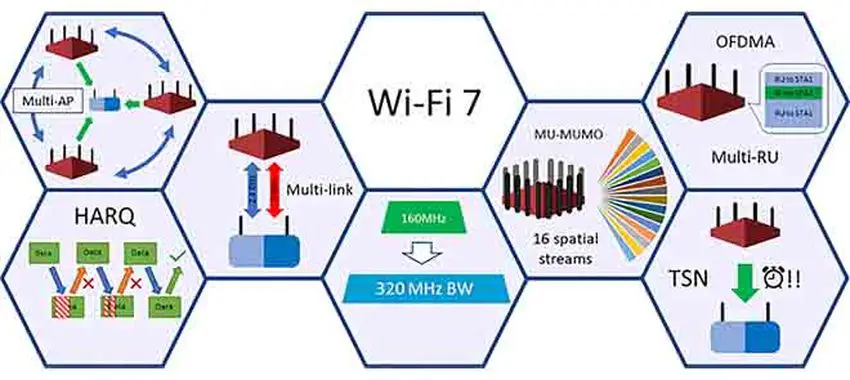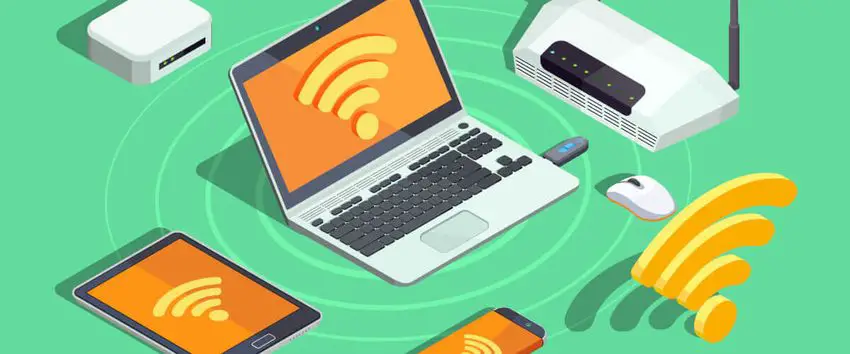Wi-Fi 6 networking devices are becoming increasingly available and reasonably cheap, prompting tech firms to begin planning for Wi-Fi 7 in their products and services.
The new 802.11be standard — currently known as Extremely High-Throughput (EHT) — concentrates on extremely high-throughput (EHT), which may help real-time apps with fast data rates. The IEEE working group predicts that it will aid services in virtual reality, augmented reality, gaming, and remote work.
Here’s how Wi-Fi 7 will compare to Wi-Fi 6 (and possibly even Wi-Fi 6E) in its current form.
Wi-Fi 6 is a wireless networking technology that provides for higher data rates, allowing for faster speeds. For those unfamiliar with it, Wi-Fi 6 is the current industry standard that works at 9.6Gbps data rates as opposed to 3.5Gbps in Wi-Fi 5 — and greater throughput. While Wi-Fi 6E is largely based on the Wi-Fi 6 standard, it adds support for the 6 GHz spectrum and high-bandwidth channels to address more devices on a single high-speed network.
You can read more about it here.

Keep in mind that the basic standards are still in draft form, and the ultimate details may differ when they’re finalized.
Comparison between Wi-Fi 6 and Wi-Fi 7
Don’t worry if you don’t understand everything on this list right away; I’ll go over them all in a moment.
- Data transfer speed: 9.6Gbps vs. 46Gbps (approx)
- Channel bandwidth: 160MHz vs. 320MHz
- Number of full-bandwidth channels: 7 vs. 6
- Spatial streams for multi-user MIMO: 8 vs. 16
- Data transmission: 1024-QAM vs. 4096-QAM

The 46Gbps data transmission rate is a theoretical maximum; actual results are likely to be around 40Gbps. That implies you can download a Blu-Ray movie file of 25GB in less than a minute, according to the strictest definition.
Second, the number of channels and bandwidth may limit how quickly data can travel between several gadgets. This will also determine how many devices may connect to one network point without affecting performance.
The next-generation Wi-Fi will also have 16 antennas for receiving and sending data. Keep in mind that most smartphones and laptops have a 2×2 MIMO (Multi-input Multiple-outputs) — two antennas for receiving (input) and two for transmitting (output) – configuration for Wi-Fi.
A 16×16 router may improve the number of devices that can access simultaneous 2×2 streams with a fast data transfer rate and little interruption.

QAM stands for “Quadrature amplitude modulation (QAM)” is a form of digital modulation for data transmission in telecommunications. It uses symbols with a certain number of bits to convey information. The more bits there are in a given cycle, the more data is conveyed. As opposed to 1024-QAM, which can transmit 10 bits per symbol, the new 4K-QAM may send 12 bits per symbol. This is beneficial in crowded places like stadiums where numerous devices are attempting to connect to the network.
How to improve WiFi signal at home?
When will Wi-Fi 7 be available to us?
Wi-Fi 7 is in the draft specification stage, and it will likely be at least a few years before we can use it. It’s critical that your region’s 6GHz band is unlicensed, allowing you to utilize Wi-Fi 6E devices.
Spectrum has already been allocated in the 28-32GHz band to various countries, with more being added to the list.

This doesn’t appear to have slowed down the tech sector’s interest in Wi-Fi 7. Last night, MediaTek revealed that it was conducting a pilot experiment with its key clients on this forthcoming standard. However, he didn’t provide many details about the test.
According to MediaTek, some Wi-Fi 7 equipped devices will be available in 2023. These might be prototypes or company items, though. So don’t hold your breath yet.
You can read Wi-Fi 7’s full specifications in the current draft here.





